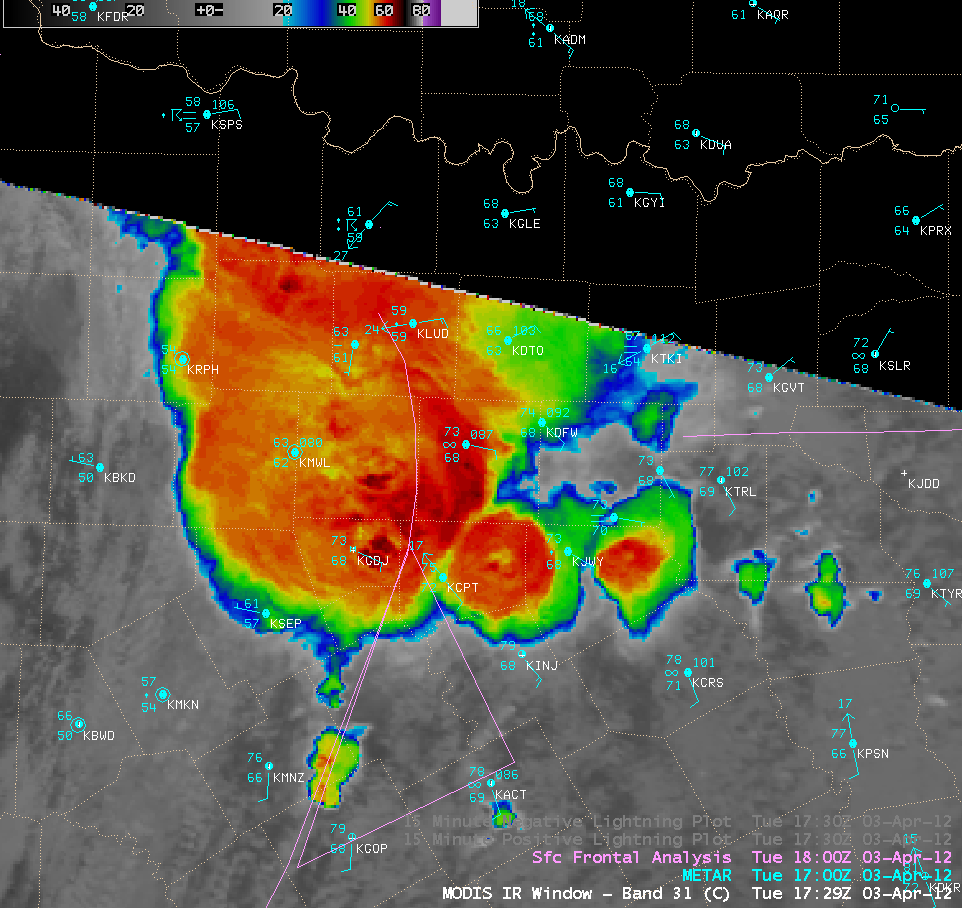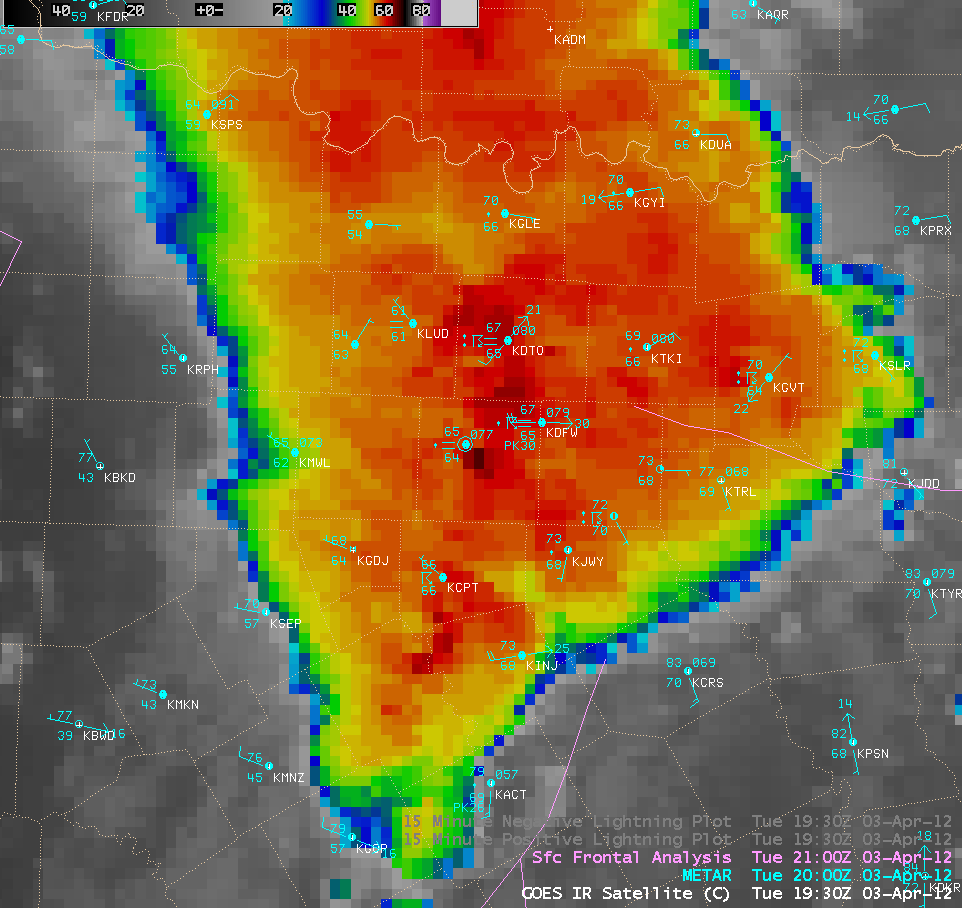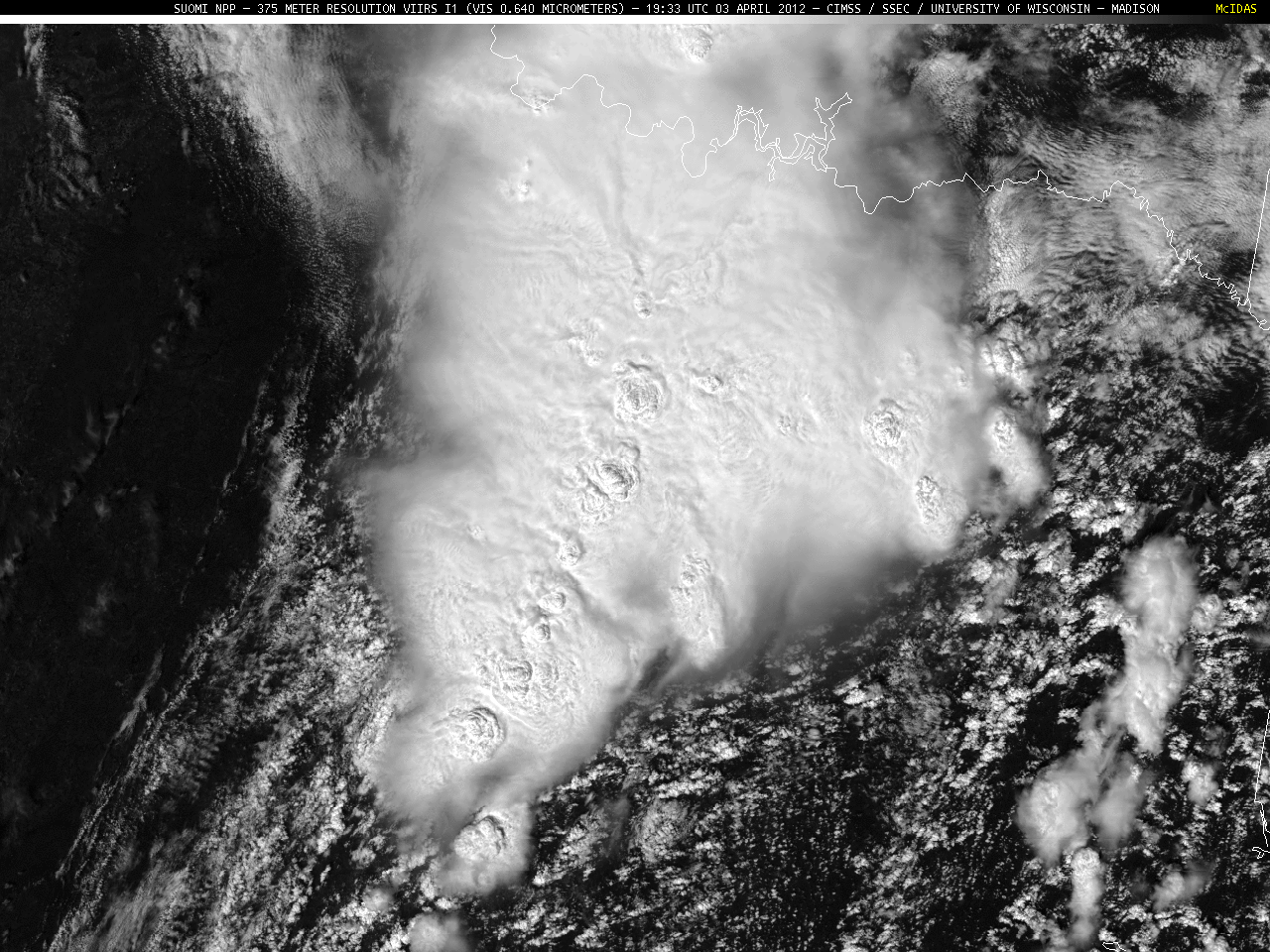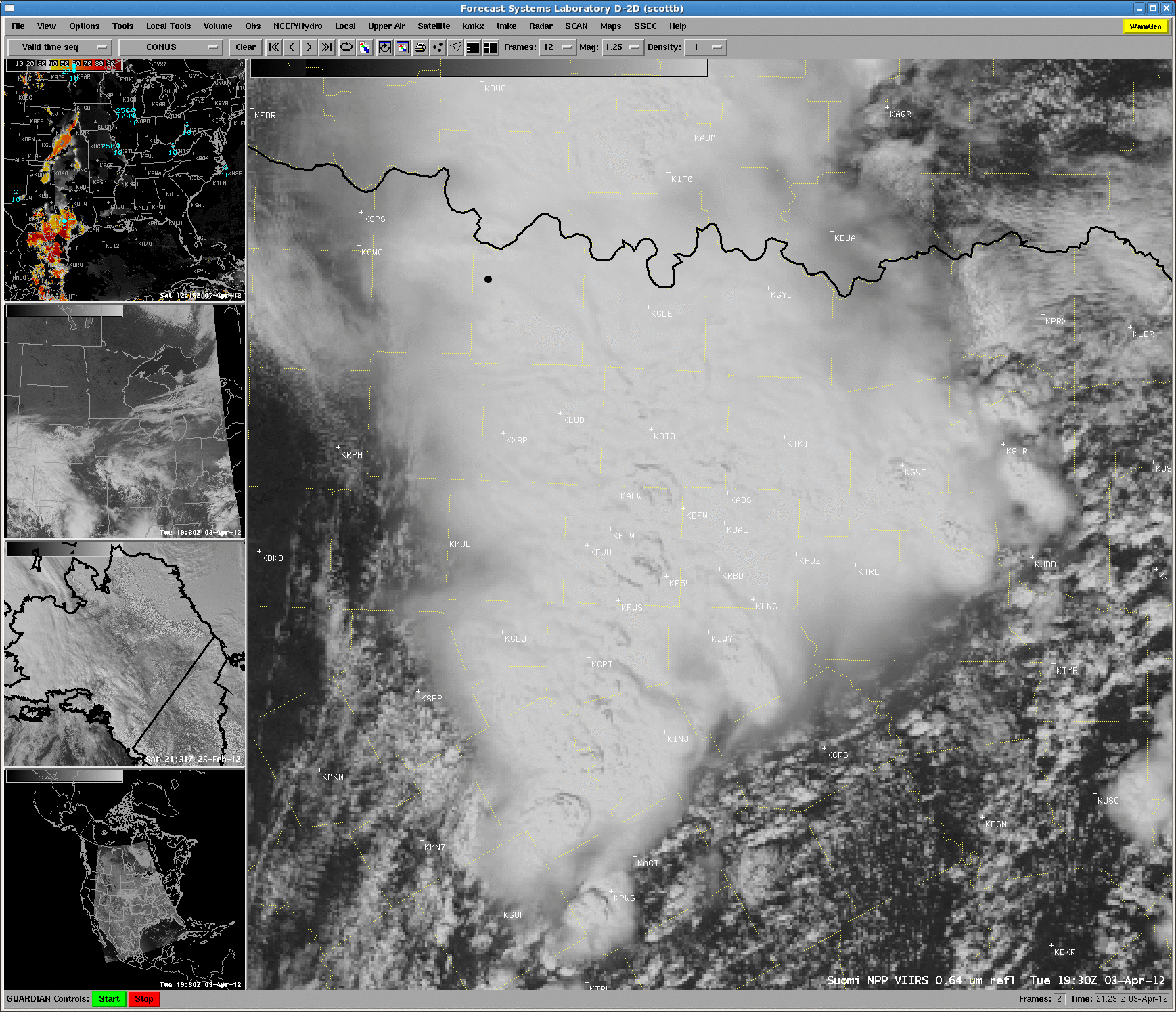Severe thunderstorms across northeastern Texas
AWIPS images of 4-km resolution GOES-13 10.7 µm IR channel images (above; click image to play animation) showed the development of a line of severe thunderstorms along an advancing cold frontal boundary as it approached the Dallas/Fort Worth, Texas region during the afternoon hours on 03 April 2012. These storms produced a number of tornadoes, hail as large as 2.75 inches in diameter, and damaging winds (SPC storm reports | NWS Fort Worth outbreak summary).
A closer view using a 1-km resolution MODIS 11.0 µm IR channel image at 17:29 UTC (below) showed much better details regarding the cloud top IR brightness temperature structure of the storms. In particular, note the pronounced cold/warm (-63º C / -52º C, respectively) thermal couplet exhibited by the storm located just east of Cleburne (station identifier KCPT), where the first tornado was reported by spotters at 17:35 UTC.

MODIS 11.0 µm IR channel image + Surface reports + Surface frontal analysis + Cloud-to-ground lightning strikes
A comparison of the 1-km resolution MODIS 11.0 µm IR channel image with the corresponding 4-km resolution GOES-13 10.7 µm IR channel image (below) demonstrated (1) the advantage of higher spatial resolution for more accurately identifying and quantifying storm top signatures, and (2) the parallax shift of the storm top features, due to the large viewing angle from the GOES-13 (GOES-East) satellite.
A similar MODIS vs GOES-13 IR image comparison about 90 minutes later (below) again showed how the numerous cold overshooting tops were much more apparent on the 1-km resolution MODIS image.
Even greater detail could be seen on a 375-meter resolution Suomi NPP VIIRS 11.450 µm IR channel image at 19:33 UTC (below), which showed a number of cold overshooting tops with IR brightness temperature values in the -70 to -79 C range (dark black to white color enhancement). Hail of 2.0 inches in diameter was being reported just to the west and just to the east of Dallas/Fort Worth International Airport (DFW) at 19:30 UTC.
A comparison of the 375-meter resolution Suomi NPP VIIRS 0.64 µm visible channel and 11.450 µm IR channel images can be seen using McIDAS (above) and AWIPS (below).






